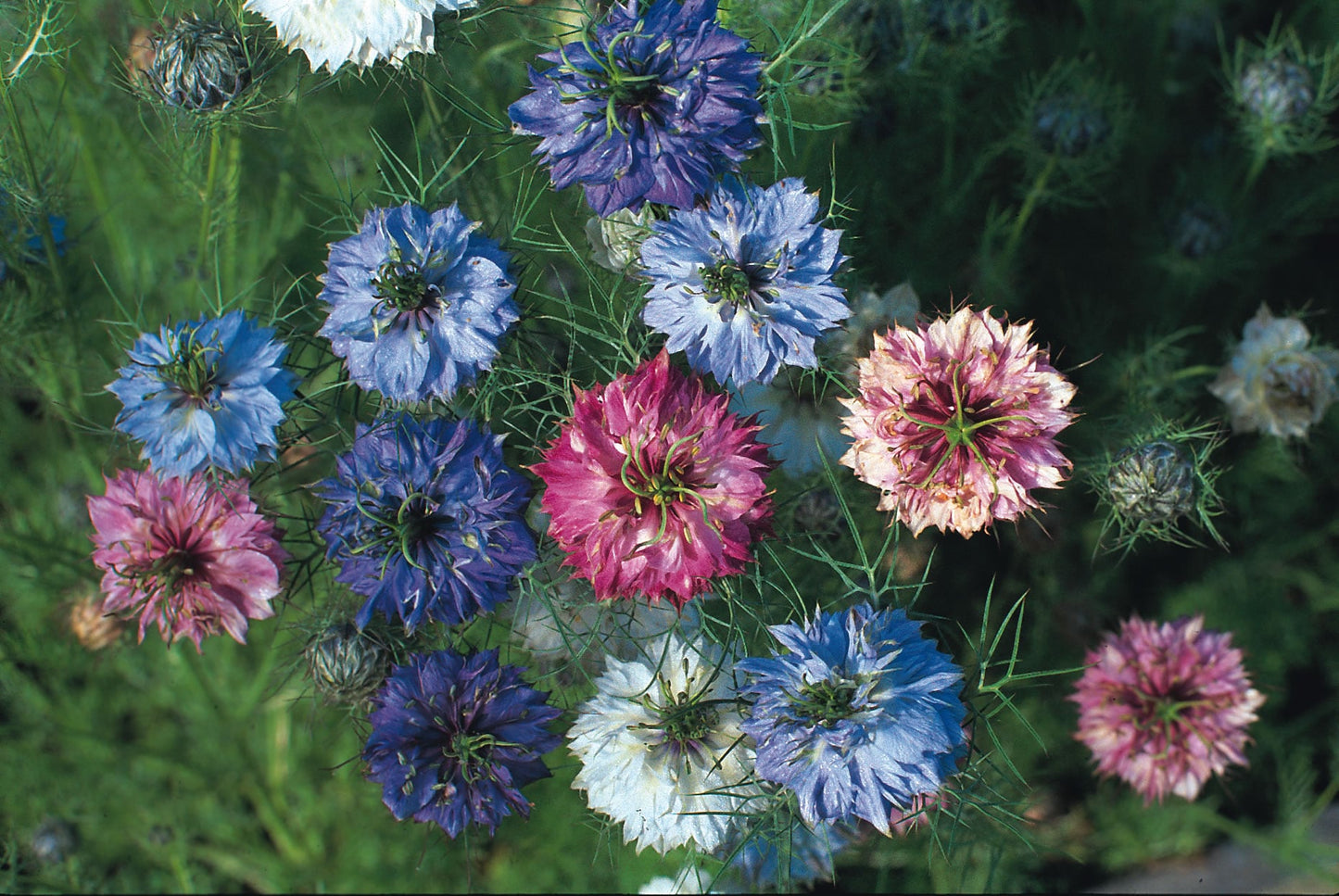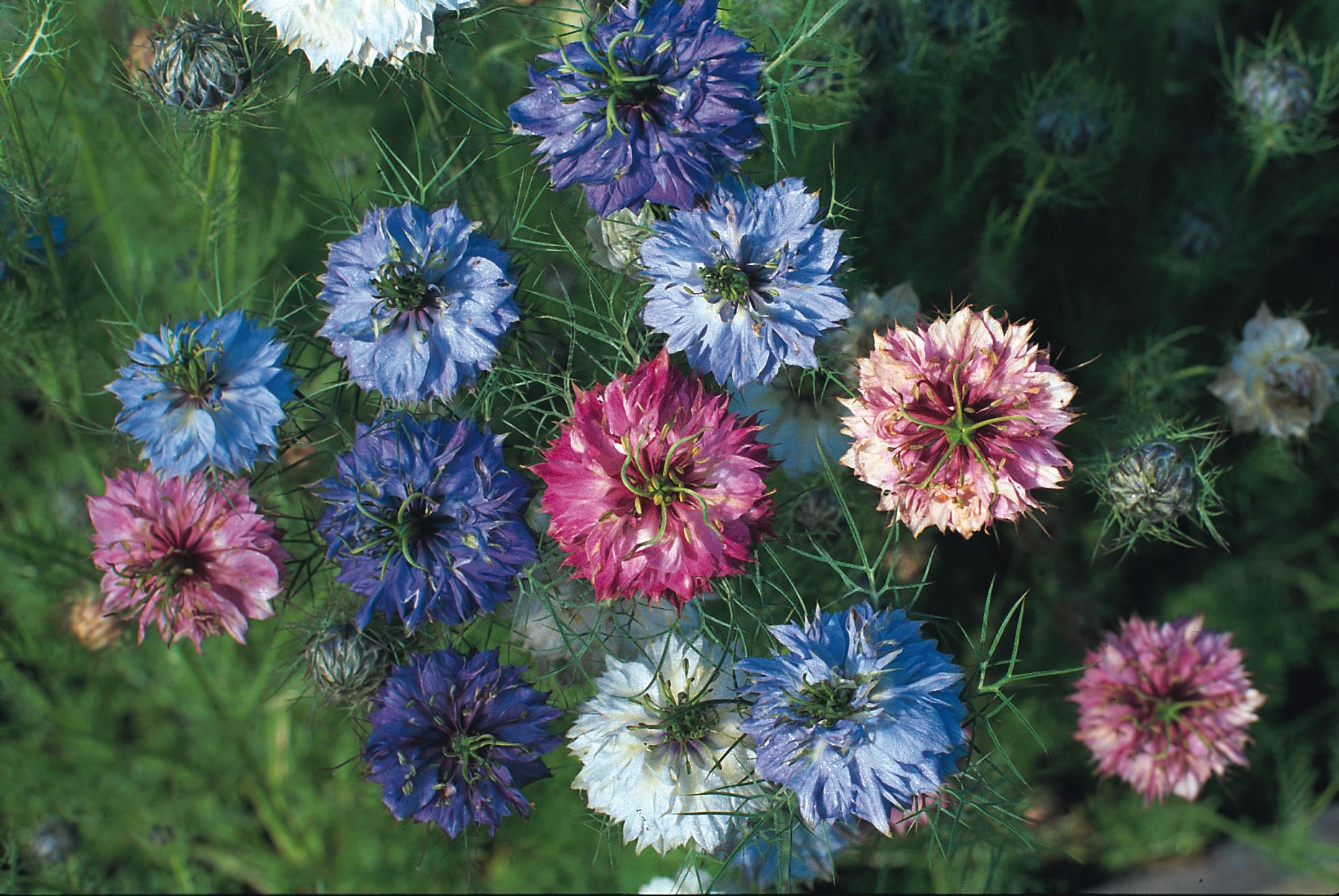Nigella Persian Jewels
Nigella Persian Jewels
Packet Size: 200 seeds
Couldn't load pickup availability
Nigella ‘Persian Jewels’ is a treat for the eyes — with finely cut foliage, sculptural seed heads, and a soft mix of flower colours: pinks, purples, lilac, blue, and white. These drought-tolerant plants don’t need daily watering and are just as happy in a sunny flowerbed as they are picked for the vase. The seed heads can also be dried for later — but do leave some for garden wildlife.
There’s more to discover about Nigella damascena ‘Persian Jewels’ below.
🌸 Flowering: June to August — or from May if sown in autumn.
📏 Height: 45-60cm
🌿Annual
SOW: from March to May, scatter seeds where you want them to flower and barely cover them — about 3mm is enough. Germination usually takes around 3 weeks, and you’ll get flowers roughly 10–12 weeks after sowing — so expect blooms from June onwards.
If you’ve got a sheltered spot, try an early autumn sowing for flowers that arrive a few weeks earlier the following year. Or, for more control, sow in modules under cover in autumn (this helps avoid root disturbance), then plant out in spring.
GROW: nigella are easy-going and happy in most garden soils, but they really shine in a sunny, well-drained spot. Deadhead regularly and they’ll keep flowering for months.
If you want those pretty seed pods, leave some flowers to go to seed — or better yet, sow fresh seeds every 3–4 weeks for a steady supply of blooms all season long.
📌USES
Wildlife-friendly
- Short tongued bumblebees (Bombus pratorum) aka Early Early Bumblebees, are some of the smallest and prettiest bumblebees—look out for their bright orange tails and lemon-yellow bands.
- Honey bees enjoy the abundant nectar and pollen.
- These rich blooms also attract various beneficial insects that support your garden’s health.
In the garden
- Plant Nigella in drifts or clusters; mulch underneath to hold moisture and keep weeds down.
- For fresh cut flowers: pick early morning, strip some lower leaves, and stand stems in deep water for a few hours before arranging. They’ll last 7–10 days in a vase.
- To dry: wait till seed heads form, cut stems at the base, and hang upside down by string.
- Slugs and snails seem to avoid Nigella
- Deer and rabbits usually leave it alone.
- Drought tolerant
Edible
- Nigella damascena seeds have an intense nutmeg-like flavour when finely ground and this spicy flavour is delicious used sparingly in condiments and sweets and more traditionally in bread and cheese—too much can upset your stomach.
- Harvest when pods start turning brown. Dry them on kitchen paper until papery. Shake out seeds carefully, clean out bits and bugs, and store in a cool, dark, dry place.
Historical
- Nigella damascena is native to northern Africa and the Eastern Mediterranean.
- The first evidence in Europe comes from the late Bronze Age (1500-1000BCE): an archaeobotanical study of a area in the Alps found preserved seed in mining spoil leading to the supposition that it had come with an influx of people or from an exchange of traded goods.
- Grown in English cottage gardens since Elizabethan times.
Other
- Nigella damascena revels in many names, including Love-In-The-Mist To Bird’s Nest, Spiderflower, Devil In The Bush, Blue Crown and Ragged Lady
- During Victorian times the floriography (language of flowers) had Nigella as a symbol of unrequited love—a bouquet with Nigella might mean rejection.
- The Roman physician, Dioscorides used Nigella seeds theadaches, nasal congestion, toothaches, insect repellent, and intestinal worms.
- The ground seed was used as a snuff
- The seeds, crushed into a paste, were used to banish freckles
- Nigella damascena is said more recently to have an expectorant effect in small doses (used to treat coughs), but the effect has not been clinically proven
- There has been little medical research specifically of Nigella damascene, it should not to be confused with N.sativa (black cumin)
- Please Note: we do not promote the medicinal use of plants – guidance and information should be sought elsewhere.
Suits
- Great self-seeder for wildflower meadows.
- Perfect for gravel and coastal gardens because it’s drought tolerant.
- Fits well in cottage style and informal garden plantings
- Wildlife gardens
- Cutting garden
- An easy filler for borders

Collapsible content
Sowing
- Mar
- Apr
- Aug
- Sep
- May
Harvesting / Flowering
- Jun
- Jul
- Aug

